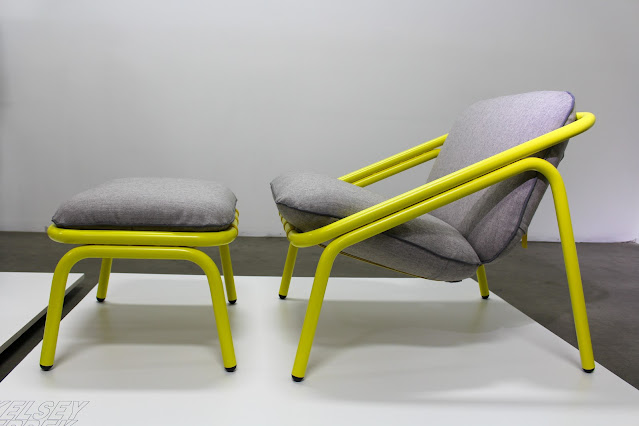Personal Fabrication: part 4... the Potential
The Potential of 3D Printing for Industrial Design
Re-mixed industrial design
Just as musicians can upload tracks of their music files for the public to download and re-mix, the same could happen for industrial design. In fact it already happens today in the form of modifications to cars. Users buy variations of wheels, bumpers, lights, and other car parts to suit their own style. A future example might be a software program from Motorola that allows one to create a unique mobile phone design. It could provide options for shape, configuration, button layout, size, graphics and color. These options would be displayed as three-dimensional rendering on-screen before one decides to press “print.”
Open-source Industrial Design
Open-source software, such as the Firefox browser, is being constantly revised and updated by various software coders around the world. These changes are then shared with all for our mutual benefit. Personal fabrication would allow for open-source industrial design. What would this look like for industrial design? Perhaps a design could be available for download as a parametric solid model assembly file. This file could then be modified and revised by industrial designers as they desire, adjusting functionality, changing shapes, or moving button locations. Then these revisions could be shared with all for the evolution of the design.
Crowd-Source Industrial Design
The great benefit to crowd-sourced entities, like YouTube or Wikipedia, is that the content evolves and expands in an organic, self-propagating way. What if a useful object could be designed through crowd-sourcing? Perhaps inventions could be submitted and presented to the public, who then rates the best ideas. The best rated inventions could then be design and developed and made available for download.
Directly from Designer to the User
Potentially personal fabrication allows the industrial designer to directly serve the end-user. An entrepreneurial designer could design a product, promote it directly to a micro-niche market, and manufacture it as orders come in. This would allow designers to bypass the entire traditional corporate system of marketing, sales, distribution, and mass manufacturing. The designer could even offer multiple designs for sale, without additional tooling investment costs. The relatively high fabrication costs per unit could be offset by the elimination of the overhead costs of a typical mass manufactured product.
User Designed: Who Needs Industrial Designers?
Users could define their own need, design it, create it through computer modeling and then fabricate it themselves. High school students can learn 3D modeling with Rhinoceros within a few weeks, and many casual computer users can learn Google’s Sketch-Up 3D software. So, if anyone can create their designs virtually, then all they will have to do it press “print.” This is user-defined, user-designed, and user-fabricated design. -Jason A. Morris, 2007.
 |
| FDM Perfume bottle by Molly Purdin 2007. |
Re-mixed industrial design
Just as musicians can upload tracks of their music files for the public to download and re-mix, the same could happen for industrial design. In fact it already happens today in the form of modifications to cars. Users buy variations of wheels, bumpers, lights, and other car parts to suit their own style. A future example might be a software program from Motorola that allows one to create a unique mobile phone design. It could provide options for shape, configuration, button layout, size, graphics and color. These options would be displayed as three-dimensional rendering on-screen before one decides to press “print.”
 |
| FDM Lamp with personal soundwave topology by Michele Kiss |
Open-source Industrial Design
Open-source software, such as the Firefox browser, is being constantly revised and updated by various software coders around the world. These changes are then shared with all for our mutual benefit. Personal fabrication would allow for open-source industrial design. What would this look like for industrial design? Perhaps a design could be available for download as a parametric solid model assembly file. This file could then be modified and revised by industrial designers as they desire, adjusting functionality, changing shapes, or moving button locations. Then these revisions could be shared with all for the evolution of the design.
Crowd-Source Industrial Design
The great benefit to crowd-sourced entities, like YouTube or Wikipedia, is that the content evolves and expands in an organic, self-propagating way. What if a useful object could be designed through crowd-sourcing? Perhaps inventions could be submitted and presented to the public, who then rates the best ideas. The best rated inventions could then be design and developed and made available for download.
 |
| Lamp based on personal soundwave pattern by Tyler Swain, FDM 3D printed. |
Directly from Designer to the User
Potentially personal fabrication allows the industrial designer to directly serve the end-user. An entrepreneurial designer could design a product, promote it directly to a micro-niche market, and manufacture it as orders come in. This would allow designers to bypass the entire traditional corporate system of marketing, sales, distribution, and mass manufacturing. The designer could even offer multiple designs for sale, without additional tooling investment costs. The relatively high fabrication costs per unit could be offset by the elimination of the overhead costs of a typical mass manufactured product.
User Designed: Who Needs Industrial Designers?
Users could define their own need, design it, create it through computer modeling and then fabricate it themselves. High school students can learn 3D modeling with Rhinoceros within a few weeks, and many casual computer users can learn Google’s Sketch-Up 3D software. So, if anyone can create their designs virtually, then all they will have to do it press “print.” This is user-defined, user-designed, and user-fabricated design. -Jason A. Morris, 2007.



Comments
I've been writing on the subject for awhile myself, at http://futureofobjects.blogspot.com. It's nice to see more insight on the topic!